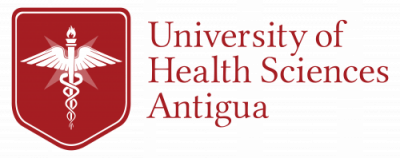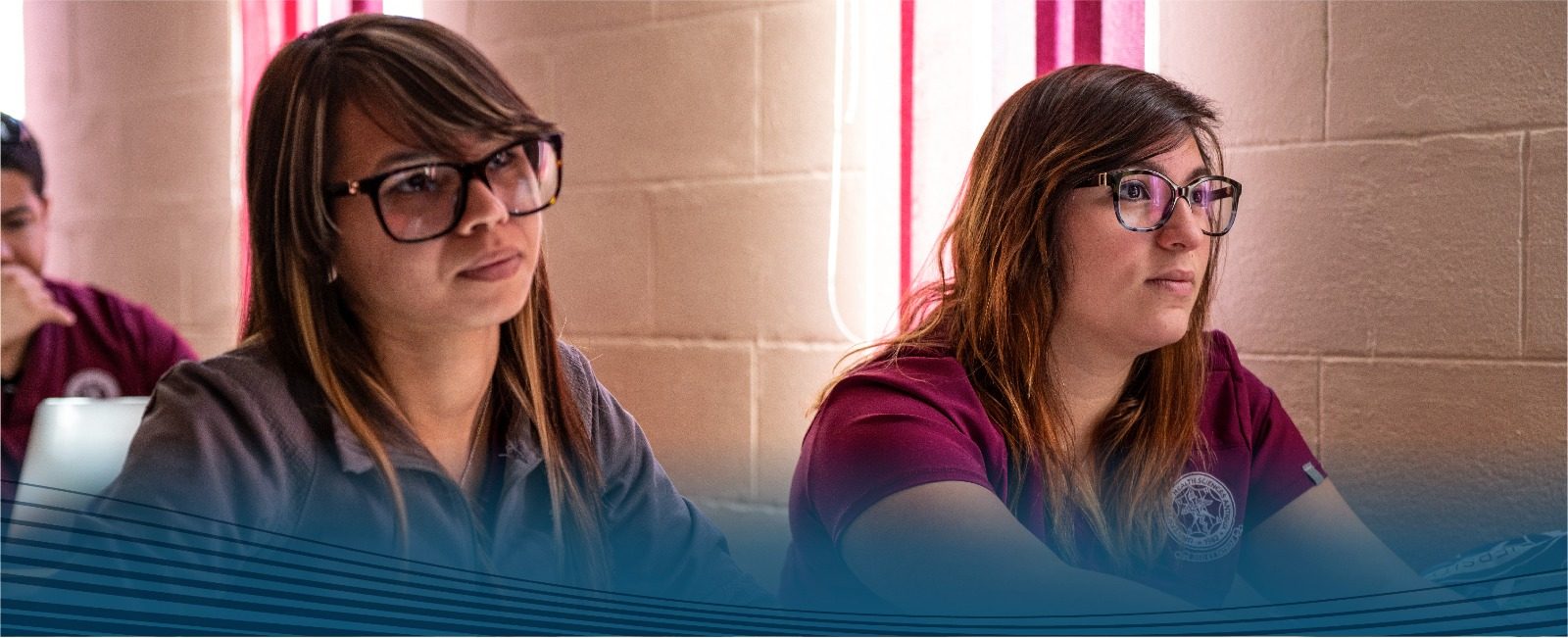At UHSA’s School of Medicine, students undergo a thorough curriculum that equips them for the future. The program entails on-campus completion of the basic sciences in Antigua, while the clinical sciences are taught in affiliated teaching hospitals.
Doctor of Medicine Program - Become a Physician
- Program Overview
- Doctor of Medicine (MD) Curriculum
- Second Degree Options
- Hospital Affiliations
- Clinical Skills & Simulation Center
- Graduation Requirements
Doctor of Medicine (MD) Program
The four-year Doctor of Medicine (MD) program is designed for individuals with a bachelor’s degree and follows a U.S.-modeled medical curriculum.
By seamlessly integrating the basic and clinical sciences, the MD program prepares students to become well-rounded physicians ready to practice in the United States, United Kingdom, Canada, and globally.
Conducted entirely in English, the MD program aims to build a robust knowledge base essential for medical licensing exams, clinical science years, and post-graduate program preparation.
Our small class sizes and exceptional faculty—all holding either an M.D. or Ph.D. in their teaching field—ensure a comprehensive education. The first two years focus on completing the Basic Sciences on our Antigua campus, while the final two years are dedicated to Clinical Sciences at our affiliate teaching hospitals.
Doctor of Medicine (MD) Curriculum - Four Years
Basic Sciences - Years One and Two
The Basic Sciences, which takes place in Antigua at our 50-acre campus, focuses on the medical sciences using our United States-modeled medical school curriculum. Students build a medical knowledge base that will serve them throughout their medical careers. Our Basic Sciences faculty are highly credentialed and recruited primarily from the United States.
Term I - Year One
Human Engineering I:
Clinical Anatomy and Imaging
Embryology
Cell Biology
Histology
The Practice of Medicine I:
Clinical Observership (Primary Care)
The Physician and Society:
Medical History and Professionalism
Term II - Year One
Human Engineering II:
Biochemistry
Physiology
Medical Genetics
The Practice of Medicine II:
Clinical Observership (Primary Care)
Perspectives of the Mind:
Behaviour and Health
Term III - Year One
Human Engineering III:
Neuroscience
Medical Microbiology and Immunology
The Practice of Medicine III:
Clinical Observership (Primary Care)
Healthy Communities:
Wellness and Prevention
Term IV - Year Two
Disruption, Repair, and Care I:
Pathology
Pharmacology
The Practice of Medicine IV:
Clinical Observership (Internal Medicine Wards)
The Physician as a Scientist:
Enquiry and Evidence-based Medicine
Term V - Year Two
Disruption, Repair, and Care II:
Pathology
Pharmacology
The Practice of Medicine V:
Clinical Observership (Internal Medicine Wards)
The Medical Ethos:
Intersections of Medicine, Law, and Ethics
TERM VI - Year Two
Basic Sciences Comprehensive Review (Kaplan Review) – Seven weeks online
Clinical Sciences - Years Three and Four
After completing the basic sciences curriculum, students move on to years three and four to complete clinical rotations in the United States or Canada at UHSA-affiliated teaching hospitals. The clinical curriculum consists of 78 weeks of core and elective clinical clerkships.
Students receive personalized guidance from the clinical faculty and develop the skills and knowledge essential for graduate medical education. Training includes interviewing and examining patients, interpreting laboratory results, performing certain procedures, and communicating with patients, families, and the health care team.
The clinical department schedules rotations for students.
Core Rotations - 48 Weeks
Third-year medical students are required to complete core rotations in the following areas:
Family Practice – 6 weeks
Internal Medicine – 12 weeks
Obstetrics and Gynecology – 6 weeks
Pediatrics – 6 weeks
Psychiatry – 6 weeks
Surgery – 12 weeks
Elective Rotations - 30 Weeks
Fourth-year medical students must complete 30 weeks of elective clerkships. Students choose their clerkships based on their interests and goals. Elective clerkships can be in any of the below categories and can be no less than two weeks and no more than four weeks.
Allergy and Immunology
Orthopedic Surgery
Anesthesiology
Otolaryngology
Colon and Rectal Surgery
Pathology
Dermatology
Pediatrics
Emergency Medicine
Physical Medicine and Rehabilitation
Family Practice
Plastic Surgery
Internal Medicine
Preventive Medicine
Medical Genetics
Psychiatry
Neurological Surgery
Radiology
Nuclear Medicine
Surgery
Obstetrics and Gynecology
Thoracic Surgery
Ophthalmology
Expand your education by pursuing a second degree
Pursuing a second degree while earning your M.D. at UHSA can be highly advantageous based on your interests and long-term career goals. We believe obtaining two advanced degrees enhances your credentials, making you a more competitive candidate for residency in today’s marketplace.
Walden University, a regionally accredited online university based in the U.S., offers an array of program options to UHSA students. Walden also provides UHSA students a 25 percent reduction in tuition for their second degree.
Walden’s programs can help students develop the critical and creative thinking skills needed to succeed in healthcare. Students can choose from an array of degree programs in areas of study such as Business and Management, Public Health and Health Sciences, Public Policy and Administration, and more.
Walden University has an established track record of concurrent enrollment success with dedicated support to allow students to succeed. The concurrent enrollment model provides the structure to master time management.
For more information, visit the Walden partnership page or contact:
Walden University
Direct number: 443-627-7292
Email address: medstudents@waldenu.edu
Affiliated Hospitals And Clinical Centers
We are continuously offering students more options. The Clinical Sciences Department at UHSA manages hospital placements for students.
Students completing elective clerkships have additional hospital options and should contact the Clinical Sciences department.
Antigua & Barbuda
- Mount St. John’s Medical Centre
Canada
Labrador-Grenfell Regional Health Authority
Nigeria
- Babcock University Teaching Hospital
- DIFF Medical Center
United Kingdom
- Imperial College Healthcare NHS Trust
-
Sheepcot Medical Centre
Elective Placements are open to Medical students at Queen Mary University London who are currently in their final year of study, except those to which it is a requirement to complete an elective placement in the break between their penultimate and final year.
Elective placements are restricted to one placement per application, they do not consider multiple/split placements.
Further information as noted below can be found via their website and FAQs.
USA
Colorado
- Advent Health Avista
- Advent Health Castle Rock
- Advent Health Littleton
- Advent Health Parker
- Advent Health Porter
Illinois
- Harrisburg Medical Center
- Southern Illinois Hospital Services
- Southern Illinois Medical Services
Puerto Rico
- Bayamon Medical Center
- Costa Salud Community Health Center
- Hospital Auxilio Mutuo
- Hospital Metropolitano – Guaynabo
- Hospital Metropolitano de la Montaña
- Hospital Pavía – Hato Rey
- Hospital Pavía – Santurce
- Hospital Perea – Mayagüez
- Hospital Psiquiátrico Metropolitano
- Manati Medical Center
- Metro Pavia Health System/Perea Hospital
- Neo Med Center
- Puerto Rico Women’s and Children’s Hospital Bayamon
- San Juan Municipal Hospital
- University of Puerto Rico School of Medicine
The Standardized Patient (SP) Program is integral to UHSA’s Medical Education. It gives medical students the real-life experience necessary to develop and continuously improve their clinical skills. The SP Program employs highly trained staff to portray patients with various symptoms and illnesses.
In the first year of medical school, these standardized patients teach students to perform a complete physical examination, take a medical history, and effectively communicate with an extensive and diverse population.
Faculty preceptors and standardized patients provide detailed feedback to each student, improving each future clinician’s ability to provide the best healthcare. By interacting with standardized patients before their clinical rotations begin, UHSA health sciences students are more confident and knowledgeable when faced with their first clinical experiences.
The curricular scheme for the Teaching and Assessment of Clinical Skills Program has been divided into two phases throughout the years of study.
Phase 1 corresponds to the basic sciences years, and Phase 2 corresponds to the clinical sciences years:
- Phase 1: Assesses whether an examinee understands and can apply key concepts of basic biomedical sciences, emphasizing principles and mechanisms of health, disease, and modes of therapy. It also assesses whether the examinee can demonstrate the fundamental clinical skills essential for safe and effective patient care. These clinical skills include taking a relevant medical history, performing an appropriate physical examination, and communicating effectively with the patient. The examination consists of multiple-choice questions on Anatomy, Behavioral Sciences, Biochemistry, Microbiology, Pathology, Pharmacology, Physiology, and interdisciplinary topics.
- Phase 2: Assesses whether an examinee understands and can apply the medical knowledge and understanding of clinical science considered essential for patient care provision, emphasizing health promotion and disease prevention. It also assesses whether the examinee can demonstrate the fundamental clinical skills necessary for safe and effective patient care. These clinical skills include taking a relevant medical history, performing an appropriate physical examination, communicating effectively with the patient, clearly and accurately documenting the findings and diagnostic hypothesis from the clinical encounter, and ordering relevant initial diagnostic studies. The examination includes multiple-choice questions on Internal Medicine, Obstetrics and Gynecology, Pediatrics, Preventive Medicine and Public Health, Psychiatry, Surgery, and other areas relevant to care provision.
Overview of Methods of Assessment
Many known assessment tools or methodologies can be considered for inclusion in the Teaching and Assessment of Clinical Skills Program developed by the curriculum. An assessment tool includes “authentic assessment,” where students simulate clinical situations. This evaluation stage real-world encounters and provides students with an opportunity to demonstrate their knowledge, skills, and strategies for implementing critical thinking and decision-making skills. The goal is to identify specific student clinical strengths and weaknesses. The objective is that the results of this examination could provide the faculty with guidelines to improve the students in their areas of weakness.
The methods and resources for teaching and learning clinical skills managed by the Teaching and Assessment of Clinical Skills Program should include:
- Standardized Patients (SP) Examinations
- Objective Structured Clinical Examinations (OSCE)
- Comprehensive Clinical Skills Assessment exams (CSA) and Clinical Performance Examinations (CPX)
- Computer Case-Based Examinations
- Simulated Recall/Video Performance Reviews
- Community-Based Preceptorships
- Multiple-Choice Questions
- Self-Assessment
Students must meet the following requirements to graduate from UHSA:
- Complete all required Basic and Clinical Science courses
- Receive a passing score on USMLE Step 1 and USMLE Step 2 CK
- Complete the Application for Graduation and pay the associated graduation fee
Diplomas will not be released unless all outstanding balances, administrative documents, clinical evaluations, and scores from the USMLE Steps have been received and cleared by the Registrar.


